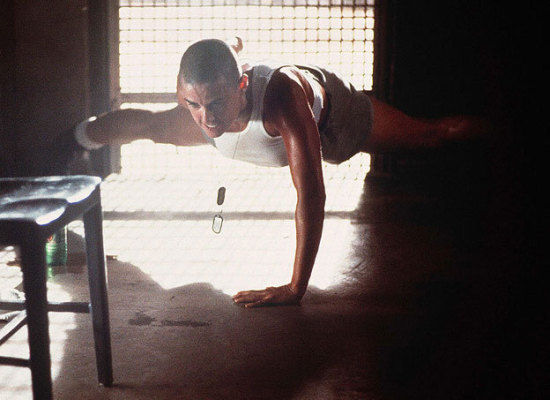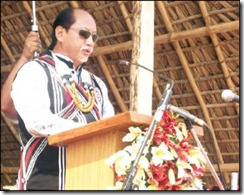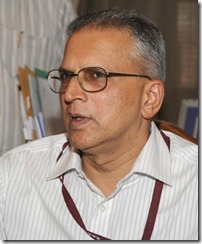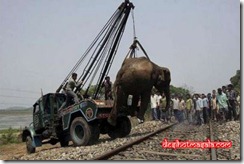Can a battle of the bands help end a brutal insurgency in India?
By Jeremy Kahn

Image credit: Sanjit Das
The young man warming his hands over a bucket of coals looks nervous. He opens his mouth wide, like a python swallowing a deer, then snaps it shut. “I’m trying to relax my jaw,” Lui Tzudir says. Tzudir is the 26-year-old front man for an alternative-rock band called Original Fire Factor, or OFF. Huddled nearby, the band’s two guitarists—one with dreadlocks, the other with headbanger-long hair—tune and retune their instruments while the drummer beats out a rhythm on the back of a chair. In little clusters around the cold, concrete room, other bands perform similar preshow rituals. The air smells of adrenaline, like a locker room before a high-school track meet.
The members of OFF look like the sort of Asian cool kids you might find jamming in a garage in Palo Alto or Seoul—but those places are worlds away. I am backstage at the Hornbill National Rock Contest, a battle of the bands held each December in Kohima, the capital of Nagaland, a forgotten corner of northeast India near the border with Burma. The contest seeks to crown India’s best unsigned rock act. For OFF and the other bands, winning means $10,000 and a chance at national recognition—perhaps even a record deal. But the stakes are higher for the state government, which set up the competition. It is betting that rock and roll might help end one of the longest-running insurgencies in Asia.
The rock contest is a modern addition to the larger Hornbill cultural festival, a kind of anthropological fair designed to showcase the folkways of the Nagas, the 30 or so related tribes that inhabit this region of mist-and-jungle-clad hills. The Nagas once had a fearsome reputation as warriors and headhunters. (At the festival, men of the Konyak tribe wear distinctive family heirlooms called yanra—necklaces strung with little human heads made of brass, one for every enemy decapitated in battle.) They resisted British rule until 1880, when they reached an uneasy accommodation with the colonial administration. As the British prepared to leave after World War II, the Nagas sought to establish their own country, and when neither London nor the newly independent India consented, they started an armed insurrection that has lasted 55 years, claiming thousands of lives. Today, convoys of the Assam Rifles—the Indian paramilitary force whose heavy-handed tactics have turned its motto, “Friends of the Hill People,” into an Orwellian joke—patrol Kohima with their faces hidden by black scarves, assault rifles at the ready.
Ending the insurgency is a priority for New Delhi. Naga tribes have become involved in rebellions in other northeastern states, and their example has encouraged other ethnic groups in the region to take up arms. India’s strategic rivals, Pakistan and China, have at times helped to arm and train the Naga rebels, using them as proxy fighters.
But a lasting peace settlement has proved elusive, and with the conflict deadlocked, the rebels have resorted to drug-running, kidnapping, extortion, and fratricidal killings among splinter groups. The violence has scared off desperately needed outside investment. The state’s only heavy industry, a paper mill, shut down in 1992, and nothing has taken its place. (Signs lining the route to the festival promote gathering honey from the forest as “sustainable development.”) With a population of just 2 million, Nagaland has 40,000 unemployed secondary-school graduates—offering the rebels a pool of angry young men without other prospects. In rural villages, the insurgents simply draft farmers’ sons into their ranks.
The members of OFF claim to care little about the separatist movement or its dream of an independent Greater Nagaland. “We are meant to believe certain things,” Tzudir says. “But the younger generation are not interested.”
Nagaland’s popular chief minister, Neiphiu Rio, wants to give these young Nagas alternatives. He has quixotic dreams of turning Kohima into India’s answer to Nashville or Motown. The rock contest is part of that plan. It is designed to connect Nagaland’s musicians to the outside world and, just maybe, to help reconcile feuding Naga tribes. “Any festival brings people together,” Rio tells me. “And when they start working together, moving together, doing things together, that brings people closer and brings understanding and unity.”
Tzudir and his band mates remain cynical. (“It’s nonsense,” Akum Aier, OFF’s long-haired bassist, says when I ask him about a new peace overture from the Indian government.) And yet, in one respect, Rio’s plan is already working. The guys in OFF don’t feel compelled to join an underground faction, and they are beginning to see rock and roll as a ticket out of Nagaland.
The question is: Where to go? Young Nagas feel alienated from “mainland India,” as they call the rest of the country. Most Nagas look East Asian, not South Asian, and those who travel to other Indian cities for education or work sometimes face discrimination or assault. Nagas speak English or Nagamese, not Hindi. They prefer Korean pop or American death metal to Bollywood or Bhangra. In a nation of Hindus, Jains, and Muslims, most Nagas are Baptist, thanks to American missionaries who ventured here in the late 19th and early 20th centuries.
“Every morning, I get up wishing I had been born somewhere else,” a 31-year-old engineer confesses to me during a party one night in Kohima.
OFF opens its first set at the festival with “Free Me,” a song that captures this longing for escape and the impossibility of realizing it: “Take me to some place where I can never be / Where I’ll become who I was meant to be,” Tzudir sings, his face aglow in multicolored stage lights. “Politics and sermons, you can’t move me.”
It is sometimes said that the Nagas have lived “10,000 years in a lifetime.” And on the competition’s last night, all 10,000 years seem to go by in a glance: girls in skinny jeans furiously thumb text messages while rubbing shoulders with guys in loincloths and headdresses who carry machetes and wicker baskets decorated with monkey skulls. Thousands of teenagers pack the outdoor amphitheater. The crowd is raucous, fueled by copious local rice beer. A wave of delighted screams washes over OFF, among the hometown favorites, as they take the stage. Throughout their set, fans in the front leap up and down like the colored balls in a toy corn popper.
When the machine-generated fog of rock war finally lifts, OFF emerges as the winner. “We still can’t believe it,” Tzudir texts me from backstage. The next morning I ask him what the band plans to do with the prize money. “Most will go to paying off the loans on our instruments,” Tzudir says, his voice still hoarse. “Then to make a recording of our songs and maybe upload it to the Net, or something like that.”
For a moment, it is easy to believe in the transformative power of rock and roll. The leaders of the largest Naga rebel faction recently met with top Indian officials, and both sides say they are serious about reaching a settlement. But they remain far apart on the details—and in Nagaland, gunfire has a way of drowning out a rocking bass line.
[ via theatlantic ]

































